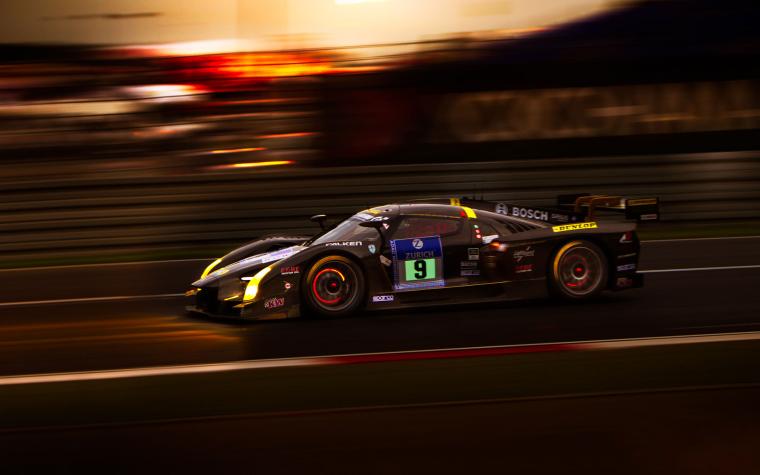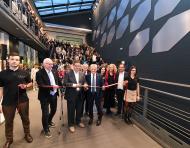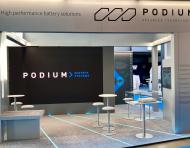News
Podium Engineering at the 43rd ADAC Zurich Nürburgring 24h
19 May 2015
Pont Saint Martin, 19 May 2015 - Scuderia Cameron Glickenhaus debuts its brand new SCG 003C at the 43rdADAC Zurich Nürburgring 24H race finishing at 35th, after relentlessly climbing its way up from 24thto 11thposition in the first half of the race, and putting up the 8thbest lap time overall in the second half.
This year Scuderia Cameron Glickenhaus challenged the Ring with their newborn SCG003C, engineered by the Podium Engineering team, relying on the expertise of Luca Ciancetti as the SCG 003C race engineer. With a project track record that is astounding by many standards, the SCG 003C was fully developed in a rule-breaking time of 14 months, from the preliminary style sketch to the first track test in Vairano (Italy) proving ground last December.Scuderia Cameron Glickenhaus is not a newcomer to this race, as they raced in the 2011 edition with their P4/5 Competizione finishing to 39th, nearly where she had started.
They went back the following year with a new powertrain combining a 4.0 liter V8 and a Formula 1-style KERS system developed by Podium Engineering. The P4/5 Competizione M went on to finish the 2012 edition race winning its class and with a remarkable 12th place overall, best result ever attained by a hybrid car.
The 43rdedition of the ADAC Zurich 24-Hour Race that took place at Nürburgring last weekend, saw only 102 cars crossing the finish line after the legendary chase twice around the clock, out of the 151 lined up on the starting grid the day before.
Two SCG 003C were built and went through the Qualifying Race that took place at the Nürburgring on April 12th, 2015. Both cars made it for the 24 Hours “Top 30”, as driver Lauck qualified “Macchinauno” (Car 1) in 6th position, and Mutsch qualified “Macchinadue” (car 2) in 4th position. On these exceptional results, Jim Glickenhaus, the visionary owner of the Scuderia that carries his name, was awarded a special trophy just before the race on May 15thby the Nürburgring organizers, for the “Extraordinary achievement in engineering and development” accomplished on this car.
During Thursday night qualifying, “Macchinadue”, owned by Christopher Ruud, suffered a spectacular 120 mph shunt crashing into the guardrails, and the yellow no. 40 Scuderia Cameron Glickenhaus SCG 003C had to withdraw from the race. American driver Ken Dobson, who was behind the wheel at that time, was sheltered safe of any injuries by the robust chassis safety structure design.
After making it through to the final 30 qualifying round on Friday afternoon (and earning the most distinctive flashing blue light), drivers Marino Franchitti, David Jahn, Manuel Lauck and Franck Mailleux started the black no. 9 Scuderia Cameron Glickenhaus SCG 003C, owned by Jim Glickenhaus himself, at 24th place in grid.
In the first 6 hours of the race, the SCG 003C earned its way up from 24thto 15thposition, until a second speeding in one of the speed-limit zones at 21h57 hit the team with a 3:32 minute time penalty, which got the car to start the 7thhour down to 18thplace.
SCG 003C no. 9 picks up the pace again, chasing her way to the top ten getting to 11thplace, when at 3h12 after more than 11 hours of continuous racing, an alternator V belt failure stops the car for one hour in the garage to get repaired. After the stop, the car hits the track again down to 29thposition.
At 07h00, ranking 26thafter 85 laps, the car is back to the pit, and into the garage.
The alternator V belt idler pulley locked, as a consequence of the previous breakdown. At 08h01 the repair works have been completed, the car is pushed out of the garage, refueled and rejoins the race in 39thposition.
At 15h15, 45 minutes to the end of the race, after a never-give-up comeback to 30thposition, and notching the 8thbest overall lap time of 8:26.480 on lap 95 at an outstanding average speed of 180.384 km/h, the car is back to the pit. Again, the alternator belt breakdown is causing power steering failure and no battery voltage.
At 15h53 the entire pit-lane applauds the Scuderia Cameron Glickenhaus squad that succeeded in push-starting the car with their last bit of strength, letting SCG003C no. 9 cross the chequered flag at 16h03 at 35thplace.


